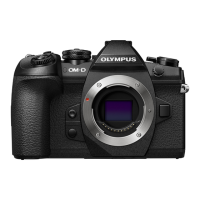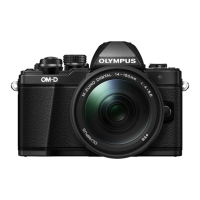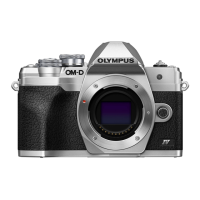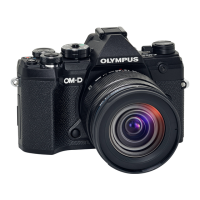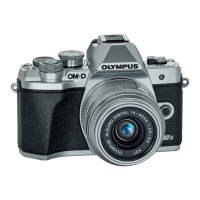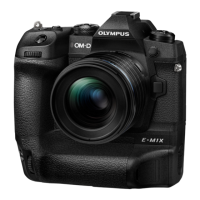47
EN
Shooting
2
• To cancel the activated self-timer, press G.
• Fix the camera securely on a tripod for self-timer shooting.
• If you stand in front of the camera to press the shutter button when using the self-timer,
the picture may be out of focus.
• When you are using S or q, live view is displayed. When you are using T or p, the
image shot immediately before is displayed.
• The speed of sequential shooting varies depending on the lens you are using and the
focus of the zoom lens.
• During sequential shooting, if the battery level icon blinks due to low battery, the camera
stops shooting and starts saving the pictures you have taken on the card. The camera
may not save all of the pictures depending on how much battery power remains.
• You can set unused functions not to be displayed in the options. g [j/Y Settings]
(P. 115)
• The frame advance rate for sequential shooting drops when [ISO] is set to 8000 or higher.
The maximum frame advance rate in silent and pro-capture modes is 30 fps.
• Photographs taken in silent and pro-capture modes may be distorted if the subject or
camera moves quickly during shooting.
Shooting without the vibration caused by shutter button operations
( Anti-Shock z)
To prevent camera shake caused by the small vibrations that occur during shutter
operations, shooting is performed using an electronic front-curtain shutter.
This is used when shooting with a microscope or a super telephoto lens.
You must fi rst set [Anti-Shock z] in X Shooting Menu 2 to the settings other than [Off]
(P. 98).
1
Press the jYHDR button.
2
Select one of the items marked ♦ using the rear dial and press the Q button.
3
Shoot.
• When the set time has elapsed, the shutter is released and the picture is taken.
Shooting without shutter sound ( Silent [♥])
In situations where the shutter sound is a problem, you can shoot without making
a sound. Shooting is performed using electronic shutters for both the front and rear
curtains so that the miniscule camera shaking caused by shutter movements can be
reduced, just as in anti-shock shooting.
You can change the time between the shutter button is pressed all the way down and
the shutter is released in [Silent [♥]] in X Shooting Menu 2. Set to [Off] to hide this
setting item (P. 98).
1
Press the jYHDR button.
2
Select one of the items marked ♥ using the rear dial and press the Q button.
3
Shoot.
• When the shutter is released, the monitor screen will go dark for a moment. No
shutter sound will be emitted.
• The desired results may not be achieved under fl ickering light sources such as fl uorescent
or LED lamps or if the subject moves abruptly during shooting.
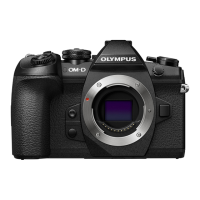
